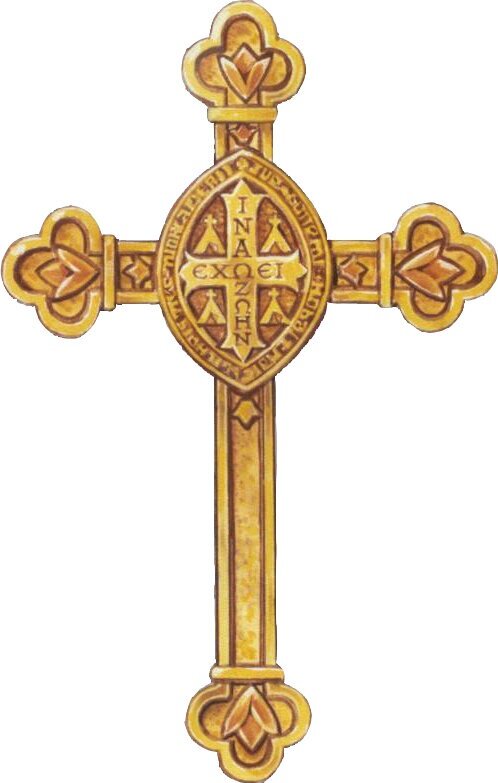THE NIOBRARA CROSS:
Here is a summary about the design of the Niobrara Cross, given to those who are confirmed in South Dakota:
Certificates of Baptism and Confirmation meant nothing to Indian converts who could not read. Bishop Hare desired to give to those who took upon themselves obligations as Christians some token that would not only mark them as communicants, but also serve as a constant reminder to them of their Christian calling. He therefore in 1874 designed a cross to serve this purpose.
The oval in the center is his episcopal seal. Around its margin in Latin is inscribed “The Seal of William Hobart Hare, by the grace of God Bishop of Niobrara.” The Greek letters on the cross, which quarters the oval read, “That they may have life.” In each angle of the cross is a tipi surmounted by a small cross. The seal signifies that Christ has come to the Dakotas and gathered them under the protection of the cross, that they have accepted him, and their homes have become Christian homes.
In June 1975, the Niobrara Deanery, by action of the one hundred and third annual Convocation, “in an expression of oneness of God’s family and the love of Christ in His Church,” voted to share with the whole church in the diocese the Niobrara Cross. The fifth annual convention of the Diocese of South Dakota resolved, in October 1975, that it “exhibit the same love and desire for unity by accepting both this Niobrara Cross and the Christian love this gift represents with thanksgiving.”
The Diocese of South Dakota is unique in the Episcopal Church. The Indian ministry of the Episcopal Church here really began with the Minnesota Uprising of 1862. After years of government treachery and deceit, the Santee people rose up and broke free of the Minnesota Valley reservation. Many lives were lost, and despite the fact that Christians among the Santee saved the lives of missionaries and some settlers, all of the surviving Indians were imprisoned and later expelled to the Dakota Territory.
Episcopal Deacon Samuel Hinman, who had served the Santee people in Minnesota for three years, accompanied them to South Dakota. The chaos of the Civil War, however, prevented the establishment of a new jurisdiction until 1871, when the Missionary District of Niobrara was created. William Hobart Hare, the first Bishop of Niobrara, was consecrated in1873. Bishop Hare designed a Niobrara Cross to give to each new Indian Christian, inscribed: That they may have life.
In 1971 the Missionary District of Niobrara became the Diocese of South Dakota with Bishop Walter Jones as Diocesan Bishop. At that time there were 18 parishes, 24 mission congregations, 90 churches and chapels in the Niobrara Deanery, and 4 Episcopal schools.


